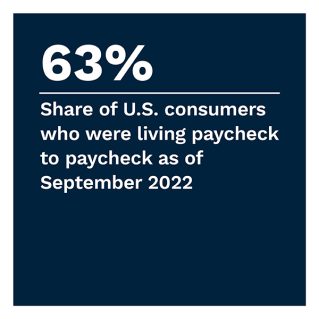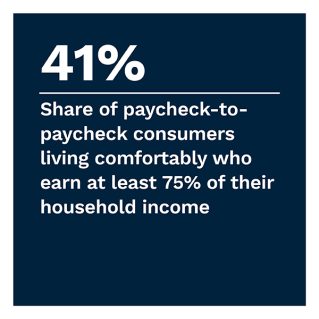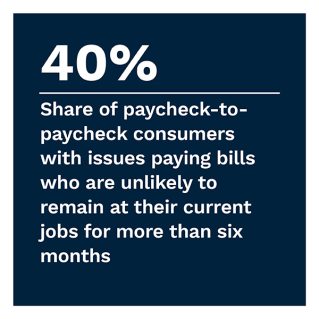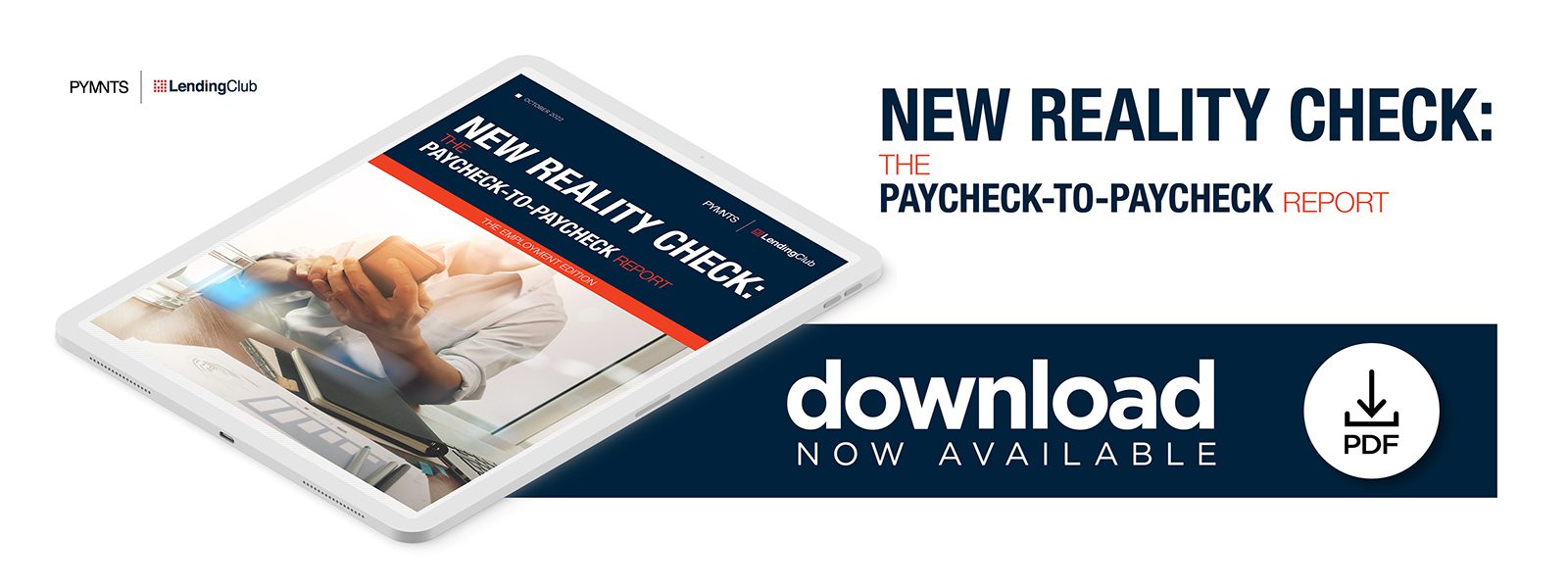40% Of US Households Are More Vulnerable to Labor Market Volatility

Economic conditions in the United States are consistent with a tight labor market — most consumers looking for work can find it. The unemployment rate stands at just 3.5%, dropping from 4.7% in September 2021 and 7.9% in August 2020. Despite the low unemployment rate, however, average hourly earnings, which increased by 4.9% in the 12 months preceding September 2022, have failed to match inflation, which rose by more than 8% in that same period.
As inflation continues to outpace wages, the share of consumers living paycheck to paycheck approaches a historic high. As of September 2022, 63% of consumers were living paycheck to paycheck, compared to 57% in September 2021. Additionally, 65% of employed consumers were living paycheck to paycheck in September 2022 — a 5 percentage point rise from a year ago.
Regardless of financial lifestyle, 81% of households have more than one breadwinner, yet 40% of respondents said their income represented three-quarters or more of their household’s total earnings. Male consumers were more likely to be breadwinners carrying more than 75% of their household income, as were consumers earning more than $100,000 a year.
These are just some of the findings detailed in this edition of “New Reality Check: The Paycheck-To-Paycheck Report,” a PYMNTS and LendingClub collaboration.  The Employment Edition examines the financial lifestyle of U.S. consumers who live paycheck to paycheck, exploring inflation’s impact on consumer employment trends, wage changes and job expectations, as well as the effect of employment decisions on financial lifestyles. The series draws on insights from a survey of 3,942 U.S. consumers that was conducted from Sept. 9 to Sept. 23, as well as analysis of other economic data.
The Employment Edition examines the financial lifestyle of U.S. consumers who live paycheck to paycheck, exploring inflation’s impact on consumer employment trends, wage changes and job expectations, as well as the effect of employment decisions on financial lifestyles. The series draws on insights from a survey of 3,942 U.S. consumers that was conducted from Sept. 9 to Sept. 23, as well as analysis of other economic data.
More key findings from the study include:
• Just one in 10 consumers say their incomes are growing at least on pace with inflation, with female consumers less likely to report such wage increases than males. We found that 48% of workers state that their incomes have remained unchanged in the last year, and just 14% say their earnings grew to match or exceed inflation in that same period.  Women are less likely to say their earnings grew on par or above inflation than men, at 11% versus 18%, respectively.
Women are less likely to say their earnings grew on par or above inflation than men, at 11% versus 18%, respectively.
• Switching jobs is how many consumers increase their paychecks, but most are growing pessimistic about their odds of doing so. PYMNTS’ data finds that only 38% of consumers are satisfied with their current salaries, with those living paycheck to paycheck with issues paying their bills the least likely to agree that their current jobs meet their wage demands, at 16%. Only 36% of consumers living paycheck to paycheck without difficulty are satisfied with their pay, while 54% of consumers not living paycheck to paycheck believe that their current jobs meet their wage demands.
• Three in 10 workers will likely change jobs in the next six months, with those financially struggling exhibiting the highest turnover rates. Significantly fewer high-income consumers are unlikely to still be at their current jobs six months from now.
While financially struggling consumers are disproportionally concentrated in industries with high turnover rates, particularly in the retail and service industries, PYMNTS’ research finds that high-income consumers tend to be predominately white-collar workers that do not change jobs as often. As a result, financial lifestyle and annual income correlate with the likelihood that a worker will change jobs in six months.
To learn more about how inflationary pressures have impacted employment and wages among paycheck-to-paycheck consumers, download the report.

